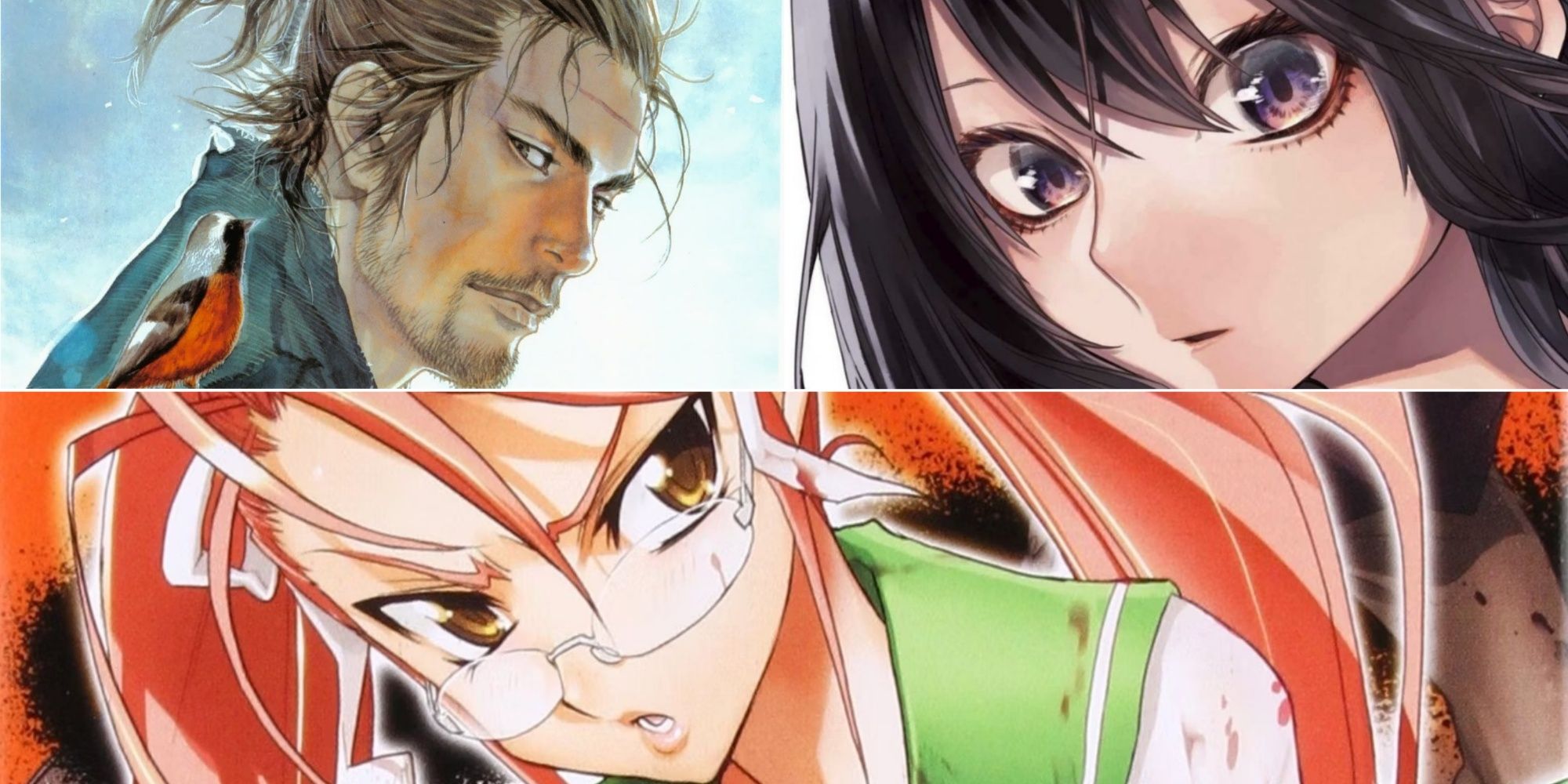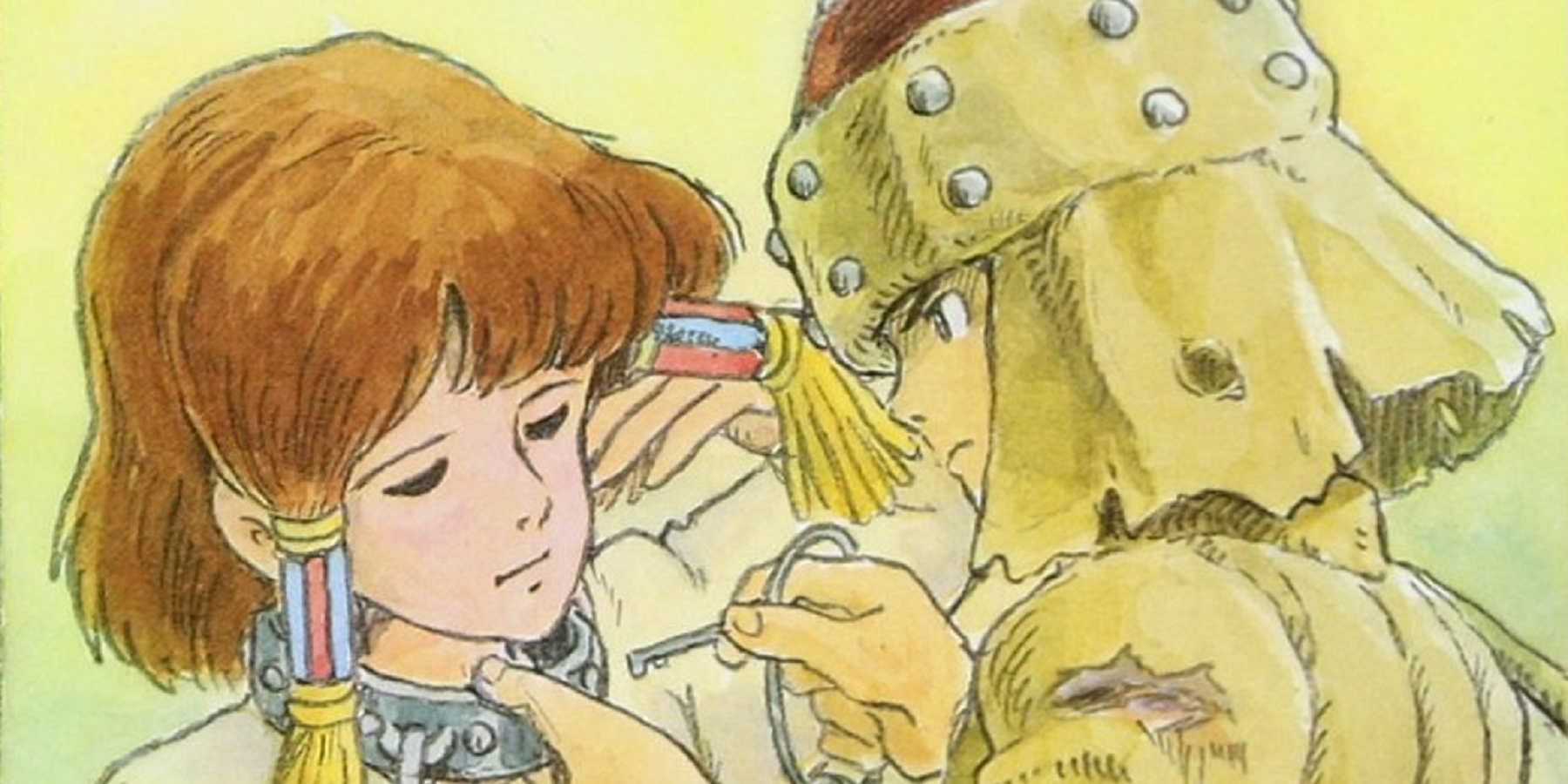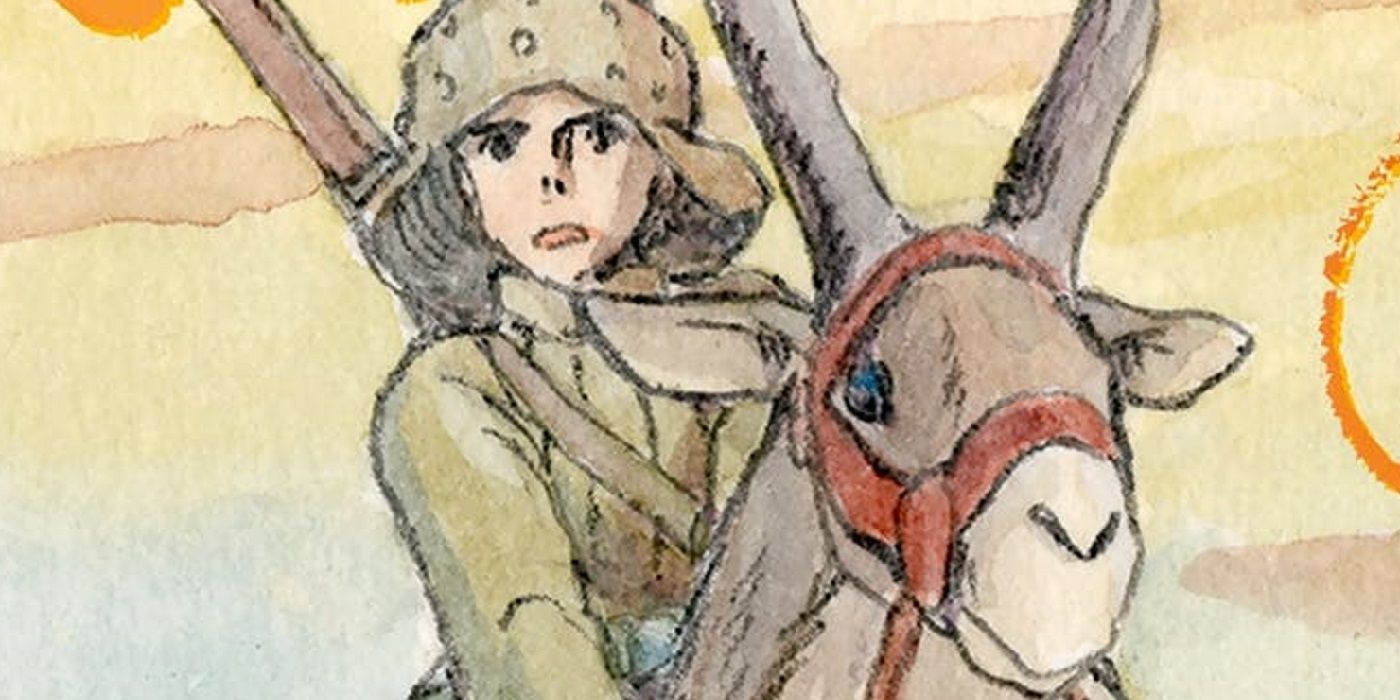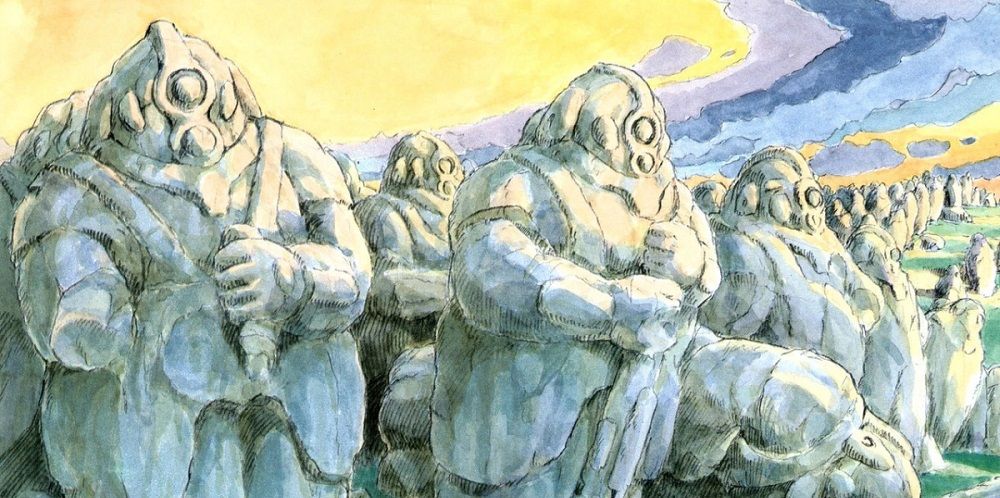Hayao Miyazaki is one of the most iconic names in world animation, and the anticipated new translation of his 1980s manga Shuna’s Journey is now released. Unlocking one of Miyazaki’s most overlooked works for a wide international readership, this new translation of the one-volume manga makes for a must-read work for fans of Studio Ghibli and anyone interested in the development of Miyazaki’s creative oeuvre. The slim one-off work reveals many of the creative impulses driving Miyazaki in the pivotal years leading up to Studio Ghibli’s formation, and this work grounds the oft-underexamined work within that broader context. Rendered entirely in full watercolor illustrations, Shuna’s Journey is a loose, dreamlike fable centering on a young prince trying to recover the lost seeds of a grain that can feed his small, impoverished realm.
The world in which the story takes place is revealed in broad, curious strokes that are as fantastical as they are strange. Sharing many aesthetic motifs with later Miyazaki films such as Nausicaa of the Valley of the Wind and Castle in the Sky, Shuna’s Journey mostly centers around the forlorn wanderings of its titular character across wide landscapes. Many pieces of information in the story often feel unconnected to others, like fragments of Shuna’s combat with bandits or the abandoned villages and statues dotting the empty world. A sense of forlornness emanates from the work, capturing the same quiet melancholy that pervades many of Ghibli’s most famous works, such as parts of My Neighbor Totoro or Kiki’s Delivery Service. The pathos that Miyazaki renders so powerfully through silent ambiance is here, as if taken away from the form of film and reframed in the even more silent conclusion of a singular, arrestingly wistful still.
Unique, Full-Color Story
With its text told primarily though narration rather than dialogue, the work both takes on the feeling of a picture book while also helping to keep space free for Miyazaki’s drawings, which are as strong in their composition and style as any of his anime films. The watercolor style, which translator Alex Dudok De Witt situates within not just manga but the Japanese emonogatari tradition of illustrated stories, is an incredible marvel of tone and saturation.
The differences in color tone are precisely used to create a sense of depth to the landscapes, while more hued tones create a bold sense of atmosphere. Likewise, the book formatting of the story takes advantage of its page-by-page layout to present large landscape shots that often merge from the right page over to the left in a unique style.
Telling its story in very broad fashion, the page-to-page pacing often switches quickly between different locations and times for the sake of the story. The subtle naturalistic movements that make Ghibli films so lifelike are not as represented in this manga, as each watercolor panel fully devotes itself to establishing a new event or location rather than showing subtle movements over time.
As is pointed out by the note from the translator, Shuna’s Journeyends on a rather ambiguous note. The tone of the story is finished in a strictly narrative sense, but its larger world and implications end with the tone that there are still things that came after—things we as the reader never get to see. Perhaps the proper way to look at the open-ended nature of Shuna’s Journey is by pulling back, by examining the broader influences that this overlooked work has had on the legendary director’s career as a wide portrait no less striking than the landscapes and epic grandeur of the illustrations themselves. For however brief a fable it is, Shuna’s Journey captures the same imaginative spark that has enchanted audiences around the world for decades.
Title: Shuna’s Journey
Rating: 4/5
Author: Hayao Miyazaki (translated by Alex Dudok De Witt)
Publisher: First Second Books






